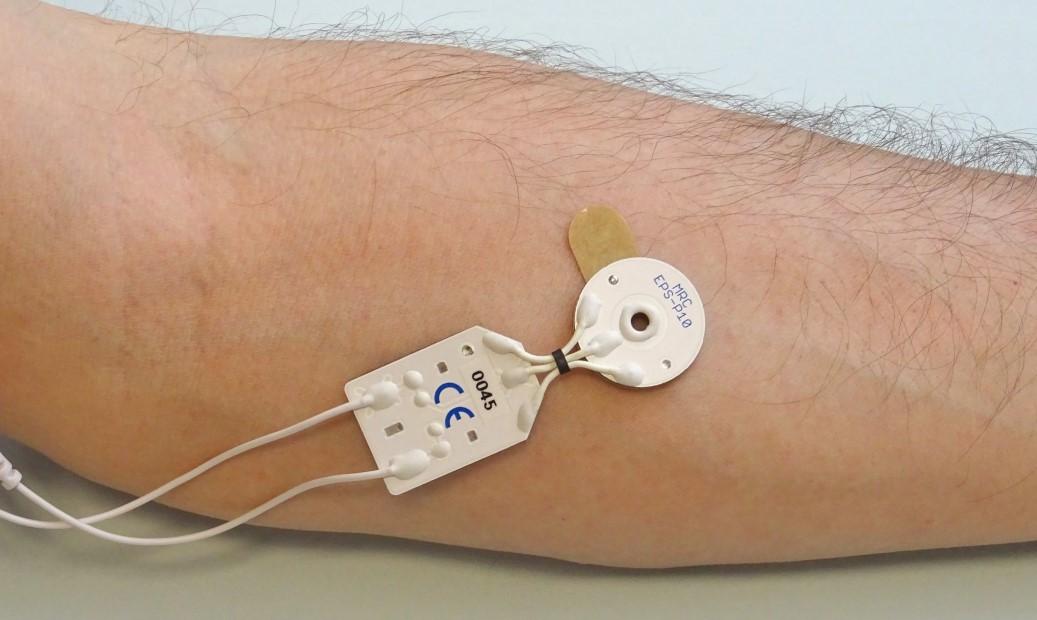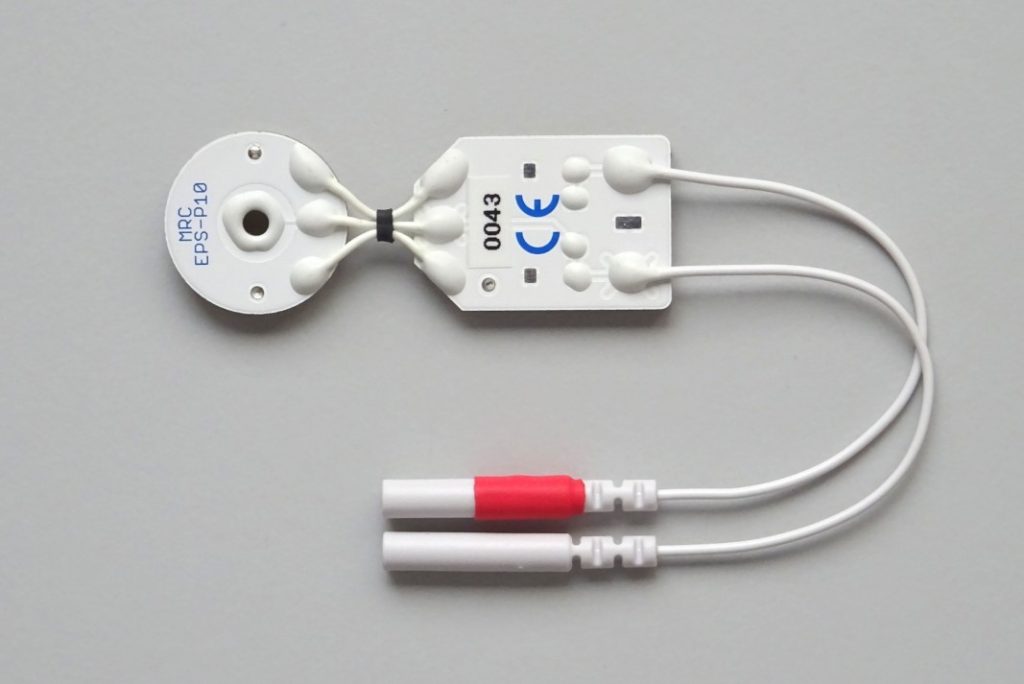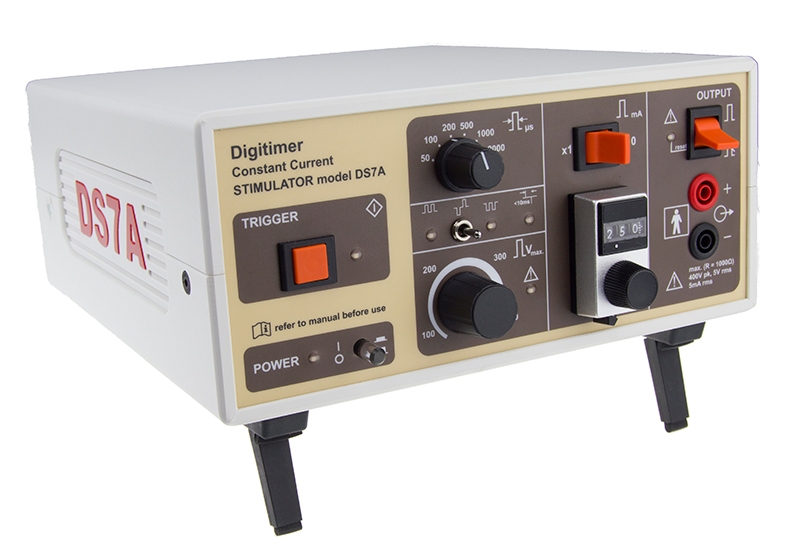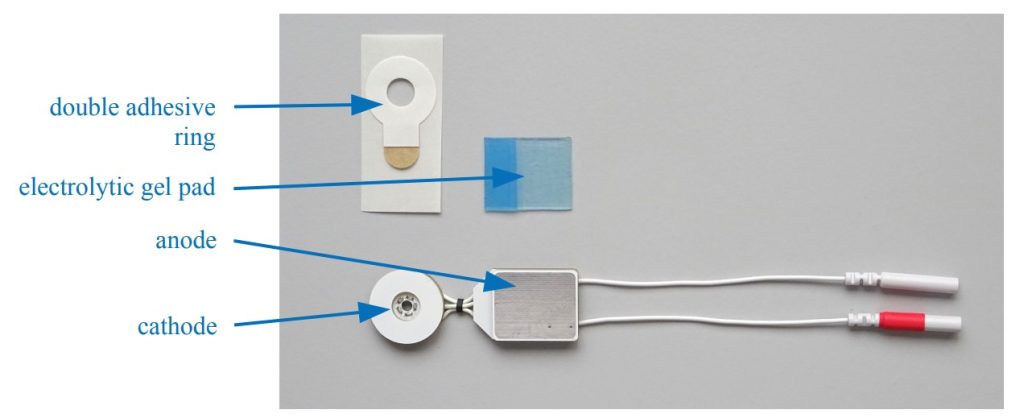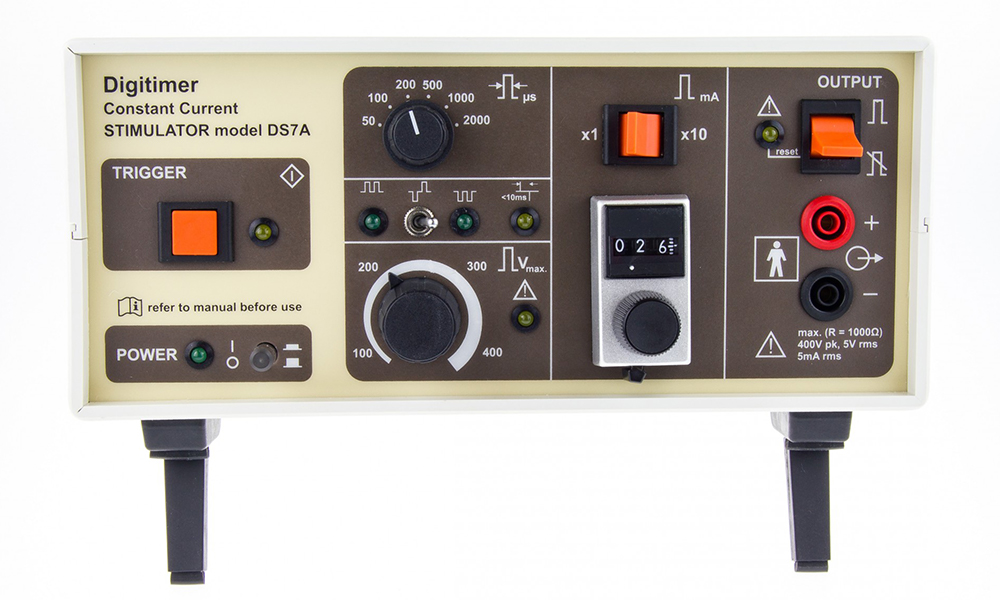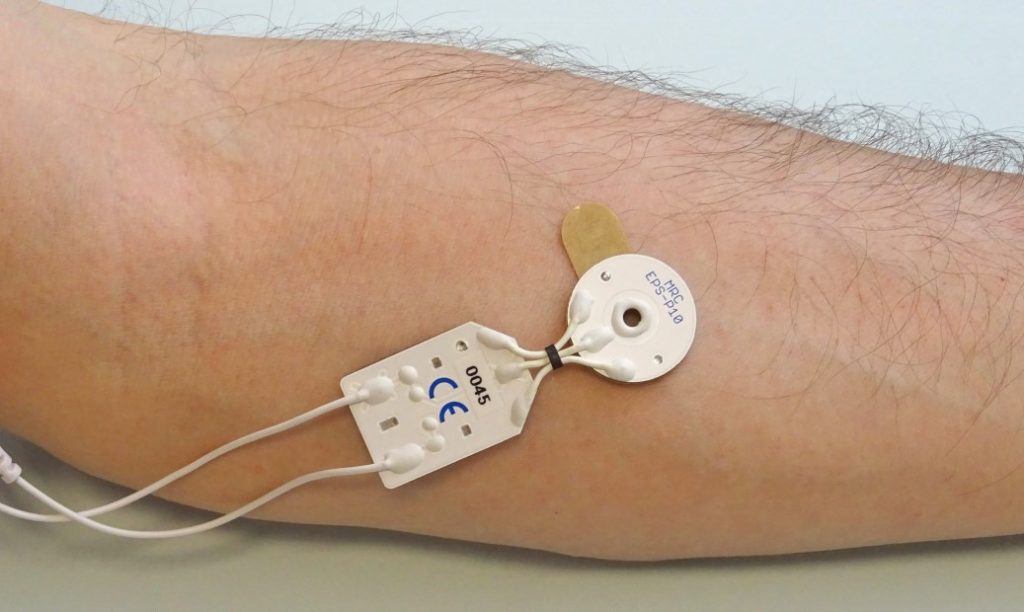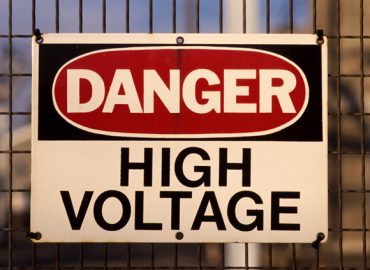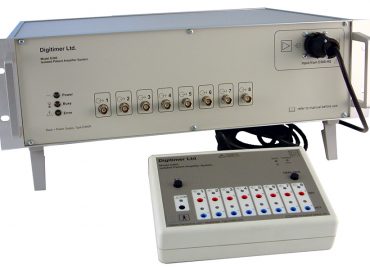Studying Pain & Secondary Hyperalgesia
with the Digitimer DS7A and EPS-P10 Electrode
Introduction
For decades, Digitimer stimulators have been employed in research studies examining the mechanisms of pain. By far the most popular is the Digitimer DS7A, which is able to deliver stimuli of up to 100mA at a voltage of 400V, making it perfect for use with high resistance (small surface area) electrodes. For users who prefer to use novel pulse shapes or different forms of external control, our DS5 and DS8R offer a range of advantages.
In this article, we discuss the DS7A, its role in studies of pain and secondary hyperalgesia and present a novel stimulation electrode developed by the BioPain Consortium and now manufactured for wider use by MRC Systems in Germany. The EPS-P10 High Frequency Stimulation (HFS) electrode is used to deliver current pulses from an external source through the skin to a subject. Current pulses can be used to determine perception or pain thresholds for an electrical stimulus, or alternatively to evoke secondary hyperalgesia. This type of hyperalgesia can last for several hours and may be used to simulate chronic hypersensitivity in healthy subjects. In order to evoke hyperalgesia, repeated current pulses with intensities above the subject’s pain threshold need to be delivered to the skin.
DS7A – Safe, High-Voltage Constant Current Electrical Stimulation
The Digitimer DS7A high voltage stimulator provides an isolated constant current stimulus of 0-100mA from a voltage source of up to 400V. The DS7A is medically certified in many regions of the world and has medical device certification within the EU and has an FDA 510(k) listing for marketing in the USA.
The high current and voltage capabilities of the DS7A mean it is perfectly suited to pain research applications where current stimulation is often applied through electrodes with low surface area. Such electrodes often require high voltages, even when the current amplitudes are relatively modest.
The DS7A features precise, manually adjustable controls for pulse duration (50us to 2ms) and amplitude (0-100mA), but also includes external trigger options, either via a foot/hand switch or digital (TTL compatible) trigger. This means that as well as single stimulation pulses, the DS7A may be employed for repetitive stimulation applications with frequencies as high as 1kHz (subject to current and pulse duration settings). For instance, in order to evoke secondary hyperalgesia, repetitive stimulation at frequencies of ~100Hz are required. If you do not have a suitable trigger source, Digitimer manufactures our standalone DG2A Train/Delay Generator, which is a compact battery-powered instrument that is commonly used alongside the DS7A.
EPS-P10 HFS Electrode – Specifically Developed for Pain Research
The cathode of the “EPS-P10” consists of ten thin tungsten pins with a diameter of 0.25mm, while the larger surface area anode is used to safely discharge the current. This means that even at low current intensities, the necessary current densities for the excitation of free nerve endings of Aδ and C fibres in the skin can be achieved. The anode and cathode of the “EPS-P10” are mechanically connected, but due to the highly flexible nature of the interconnecting cables, the electrode can be placed in a variety of positions.
Major Features of the EPS-P10
- Cathode consisting of ten stable pins made of tungsten with a diameter of 0.25mm.
- Anode with an area of about 410mm².
- Designed for multiple uses and easy to disinfect.
- Includes adhesive pads to fix the “EPS-P10” to the skin.
- Medically approved (CE).
- In use at various centres in the European research project IMI-PainCare
Preparing the DS7A for Stimulation
Before the electrode or output cables are attached to the stimulator, it is recommended that the orange output enable toggle switch is set to the down (disabled) position. The current can then be dialled to the desired setting, usually within the 0-10mA range.
As the DS7A can deliver up to 400V, we suggest that the voltage dial is turned below 400V and set at a level that permits stimulation without the out of compliance warning light illuminating. This ensures excessive voltages are not supplied to the subject.
Once the setting adjustments are made, the supplied electrode output cables (not the electrode) may be connected to the stimulator output sockets.
Attaching and Using the EPS-P10 Electrode
The EPS-10P electrode needs to be prepared prior to application. This involves attaching an electrolytic gel pad to the anode surface and a double-adhesive ring to the surround of the cathode. After ensuring both the pad and ring are correctly placed, the skin should be prepared for the electrode. The area under the anode should be slightly moistened in order to improve the stickiness of the gel pad. The area where the cathode is to be attached should be cleaned with a disinfectant and allowed to dry.
Placement starts with the cathode, which is pressed in position on the area of skin to be stimulated, ensuring the pins do not penetrate the skin. Next, the anode is attached ensuring there is no tension between the anode and cathode.
With the electrode attached and the stimulator settings re-checked, the red and black electrode leads may be connected to the electrode, with the red electrode plug connected to the red lead, which is in turn connected to the red output socket of the DS7A. The stimulation protocol may then proceed.
At the end of the stimulation protocol, the DS7A output should be disabled, then the electrode may be disconnected from the red and black cables. The HFS electrode should be gently removed from the skin taking care not to damage the electrode or harm the subject.
The HFS electrode is designed for re-use and if the same subject is to be tested within 24 hours, the gel pad on the anode may be left in place. However, it is recommended that the double-sided ring is replaced whenever the electrode is re-used, even on the same subject.
Find Out More
If you are interested in the Digitimer DS7A or would like to learn more about the EPS-P10 HFS electrode for use in pain or secondary hyperalgesia research, then please don’t hesitate to get in touch with us and we will be able to provide more information.
All images of the EPS-10P HFS electrode are courtesy of MRC-Systems.
References
- Klein T, Magerl W, Hopf HC, Sandkühler J, Treede RD: Perceptual Correlates of Nociceptive Long-Term Potentiation and Long-Term Depression in Humans. JNeurosci (2004) (Weblink)
- Leone C, Di Lionardo A, Di Pietro G, Di Stefano G, Falco P, Blockeel AJ, Caspani O, Garcia-Larrea L, Mouraux A, Phillips KG, Treede RD, Truini A: How different experimental models of secondary hyperalgesia change the nociceptive flexion reflex. Clinical Neurophysiology (2021)
- Manresa JB, Andersen OK, Mouraux A, van den Broeke EN: High frequency electrical stimulation induces a long-lasting enhancement of event-related potentials but does not change the perception elicited by intra-epidermal electrical stimuli delivered to the area of increased mechanical pinprick sensitivity. PLOS ONE (2018) (Weblink)
- Nochi Z, Pia H, Pelz B, Götz M, Höink JN, Kostenko A, Wittayer M, Caspani O, Treede RD, Tankisi H, Finnerup NB: Edit Investigation of Potential Effects of High Frequency Electrical Stimulation on Small Sensory Fibers using Perception Threshold Tracking. Conference Paper on IASP World Congress on Pain (2020).
- Pia H, Nochi Z, Pelz B, Götz M, Höink JN, Treede RD, Finnerup NB, Tankisi H: Perception threshold tracking (PTT) – A novel method to assess the small fiber function. Conference Paper on IASP World Congress on Pain (2020).
- van den Broeke EN, Mouraux A: High-frequency electrical stimulation of the human skin induces heterotopical mechanical hyperalgesia, heat hyperalgesia, and enhanced responses to nonnociceptive vibrotactile input. J Neurophysiol (2014) (Weblink)
